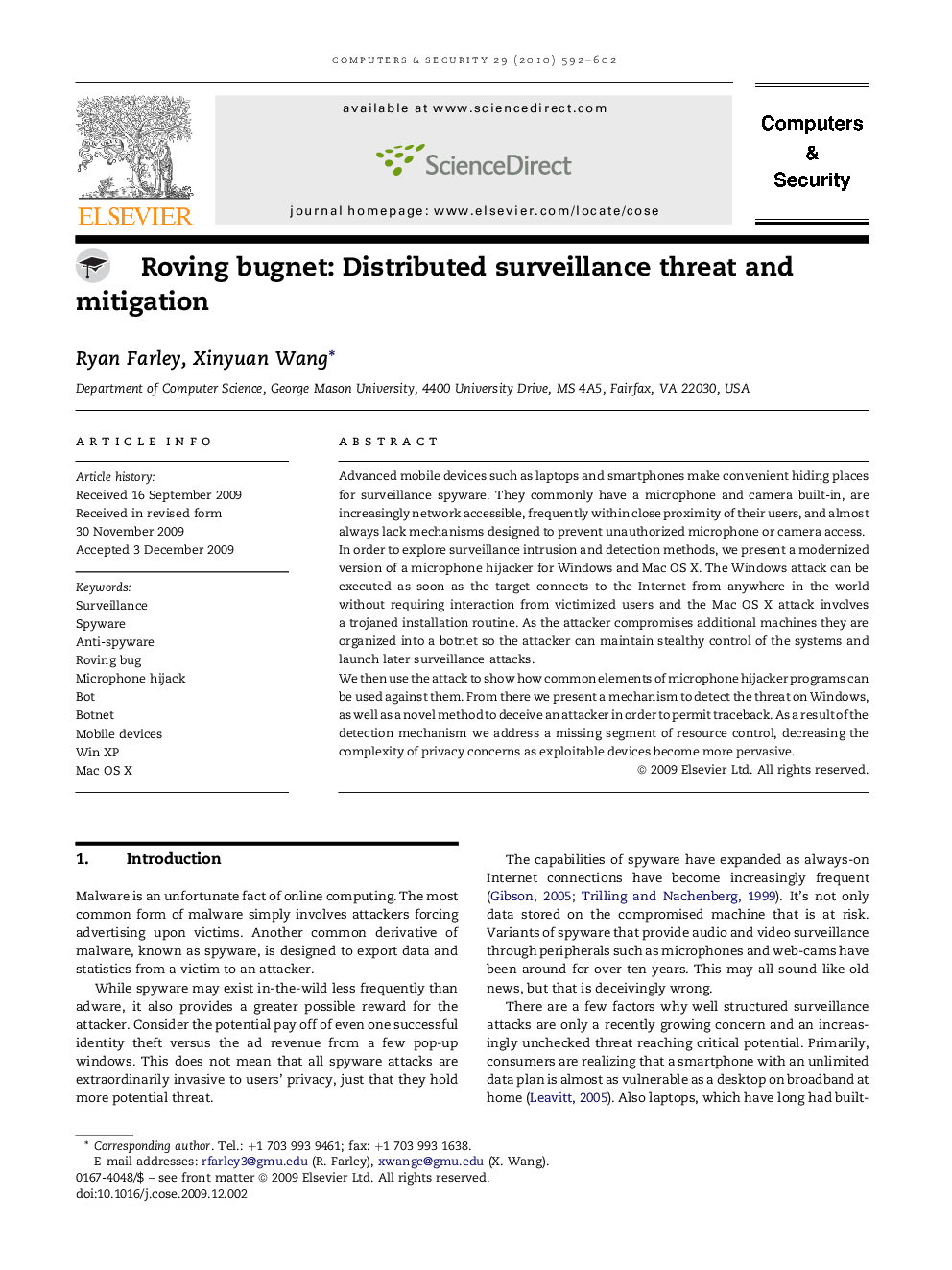| Article ID | Journal | Published Year | Pages | File Type |
|---|---|---|---|---|
| 456117 | Computers & Security | 2010 | 11 Pages |
Advanced mobile devices such as laptops and smartphones make convenient hiding places for surveillance spyware. They commonly have a microphone and camera built-in, are increasingly network accessible, frequently within close proximity of their users, and almost always lack mechanisms designed to prevent unauthorized microphone or camera access.In order to explore surveillance intrusion and detection methods, we present a modernized version of a microphone hijacker for Windows and Mac OS X. The Windows attack can be executed as soon as the target connects to the Internet from anywhere in the world without requiring interaction from victimized users and the Mac OS X attack involves a trojaned installation routine. As the attacker compromises additional machines they are organized into a botnet so the attacker can maintain stealthy control of the systems and launch later surveillance attacks.We then use the attack to show how common elements of microphone hijacker programs can be used against them. From there we present a mechanism to detect the threat on Windows, as well as a novel method to deceive an attacker in order to permit traceback. As a result of the detection mechanism we address a missing segment of resource control, decreasing the complexity of privacy concerns as exploitable devices become more pervasive.
